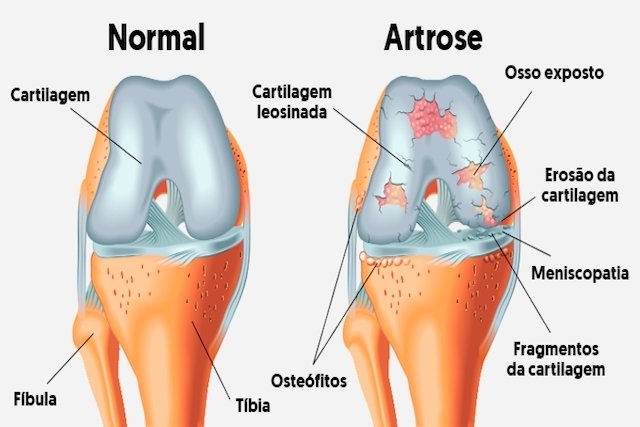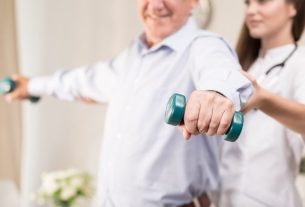There is a lot of research on the best treatment to cure osteoarthritis in the knees, hands and hips, however, a complete cure has not yet been discovered, because there is no single form of treatment that can quickly eliminate all symptoms. However, when osteoarthritis treatment is well targeted, it can significantly improve the individual’s life, bringing pain relief and improved movement.
Thus, even with internal deformities, the person may not present any symptoms, which for some may represent a ‘cure’ for osteoarthritis, for others it may simply be the absence of symptoms.
Osteoarthritis is a degenerative disease where changes occur in the structure of the affected joint. This is deformed internally due to bone remodeling and inflammation. The repair that the body itself tries to make to the joint is slow, requiring treatment indicated by an orthopedic doctor or rheumatologist.

What are the chances of curing osteoarthritis
Osteoarthritis does not always worsen over time, because the process of remodeling and attempted healing takes place continuously within the joint, but to enhance its effects, treatment is recommended. Therefore, what can be expected after a diagnosis of osteoarthritis is:
- Osteoarthritis in the hands: It is easier to control and the person usually stops showing symptoms after a few weeks or months, although the joints may appear thicker or swollen for the rest of their life. When the base of the thumb is affected, symptoms may persist when performing pinching movements with the fingers.
- Arthrosis in the knees: It varies a lot from one person to another, especially the type of severity and weight, because excess weight contributes to worsening osteoarthritis in the knees. Around 1/3 of those affected experience improvement in symptoms after a few months of treatment, but they must maintain a lifestyle in which all factors that aggravate osteoarthritis are avoided.
- Hip osteoarthritis: Although some people are completely symptom-free, and have no changes in the Radius exam, this is the type of osteoarthritis with the worst prognosis, because this is a joint that supports the weight of the body, making it difficult to control symptoms. Many people do not find sufficient relief from medications and physiotherapy, and are recommended to have a prosthesis placed to replace the affected joint, approximately 5 years after the onset of symptoms.
Some factors that can influence the severity and reduce the chances of curing osteoarthritis are other conditions such as anxiety, depression and social isolation. Therefore, in addition to specific treatment for osteoarthritis, it is also recommended to take care of emotional health, seeking to resolve fears, anguish and emotional pain to have a lighter and more satisfied life.
Treatments for Osteoarthritis
The treatment of osteoarthritis may vary according to the affected area and the complaint presented by the individual, but in general, it is recommended:
- Medicines analgesics, anti-inflammatories, corticosteroid infiltrations: Diclofenac sold as Cataflan, Diethylamine salicylate sold as Reparil, Strontium ranelate sold as Protelos, Osseor, or glucosamine, chondroitin and MSM, in addition to sucupira in capsules;
- Physiotherapy it should preferably be done every day, using resources such as devices to reduce pain and improve the functioning of the joint. Strengthening the muscles involved should be started as soon as the pain subsides and is essential to protect the joint from further damage;
- Surgery The placement of a prosthesis to replace the affected joint may be indicated in the most serious cases, but due to the scars and possible adhesions that may arise, the patient will have to continue undergoing physical therapy for a few more months after surgery.
Furthermore, it is important to maintain good habits such as eating a balanced diet and drinking plenty of water, but it is also important to strengthen your muscles and joints under the guidance of a physical educator or physiotherapist.

Sign up for our newsletter and stay up to date with exclusive news
that can transform your routine!
Warning: Undefined array key "title" in /home/storelat/public_html/wp-content/plugins/link-whisper-premium/templates/frontend/related-posts.php on line 12
Warning: Undefined array key "title_tag" in /home/storelat/public_html/wp-content/plugins/link-whisper-premium/templates/frontend/related-posts.php on line 13



